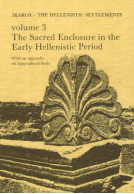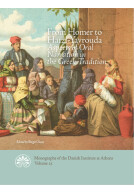Neotropical Montane Forests (Paperback)
Biodiversity & Conservation -- Abstracts from a Symposium at the New York Botanical Garden, June 21-26, 1993
Imprint: Aarhus University Press
Series: AAU Reports
Pages: 112
ISBN: 9788787600408
Published: 19th December 1993
Script Academic & Professional
Series: AAU Reports
Pages: 112
ISBN: 9788787600408
Published: 19th December 1993
Script Academic & Professional
You'll be £7.50 closer to your next £10.00 credit when you purchase Neotropical Montane Forests. What's this?
+£4.99 UK Delivery or free UK delivery if order is over £40
(click here for international delivery rates)
Order within the next 1 hour, 11 minutes to get your order processed the next working day!
Need a currency converter? Check XE.com for live rates
(click here for international delivery rates)
Order within the next 1 hour, 11 minutes to get your order processed the next working day!
Need a currency converter? Check XE.com for live rates
Neotropical lowland rain forests have received much attention in the last decade, particularly in the debate concerning biological diversity. The lowland forests have been mentioned over and over again as examples of the genetic richness of the tropical forests, and it is true that in small sample plots of, for instance, one hectare of lowland rain forest, the number of species is enormous. Lately, however, it has become increasingly clear, that the high alpha-diversity of lowland tropical rain forests is not accompanied by an equally high beta- and gamma-diversity. Montane forests, on the other hand, have been known for their richness, but when estimating their alpha-diversity by traditional methods using quantitative inventories of trees, their species richness does not equal that of lowland forests. Recent work that includes other life forms than trees, ie. epiphytes, climbers, shrubs and non-vascular plants, however, indicate that the alpha-diversity in many montane forests equals that of lowland forests. When studying the diversity patterns on slightly larger geographic scales, it has become evident that differences in species composition between localities in montane forests is tremendous - their beta- and gamma-diversities are high. It appears that, although they cover much smaller extensions than lowland rain forests, Montane forests are the homes of the better part of the biological diversity of the neotropical countries. Discussions and attention relating to conservation has been equally skewed towards the lowland forests. Still, the montane forests are just as threatened by road construction, agriculture and cattle farming as the lowland forests are. Considering this lack of attention to montane forests, despite their importance for the biological diversity of the neotropics, it was appropriate to call for a symposium addressing these issues. Much knowledge obviously exists, but often in a scattered form, and it was the intention that a symposium could bring together researchers and others with interest in neotropical montane forests, biodiversity and conservation, to exchange ideas and knowledge, and to call attention to the importance of these ecosystems for the future of genetic resources of our planet. This volume contains a selection of abstracts from the "Neotropical Montane Forests Symposium" held at the New York Botanical Garden from June 21-26, 1993. The purpose of the symposium is to document biological and ecological diversity in neotropical wet and moist Montane forests, and place it in the context with other neotropical areas. Emphasis is given to plants, with regards to taxonomic and ecological richness, threatened and conservation areas of high biodiversity and endemism, the evolution, diversity, speciation, distribution and biogeography of Andean-centred genera and families.
Other titles in the series...
Other titles in Aarhus University Press...













